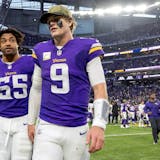All nine Minneapolis Park and Recreation Board (MPRB) commissioner seats are up for election after the board first permitted then prohibited large homeless encampments in parks across the city amid last summer's civil unrest. Activists clashed with the board over what they described as inadequate services, and neighbors complained of numerous safety problems, including discarded needles and sexual assault. Four incumbents are stepping down, while 23 candidates are vying for office. Early voting began Sept. 17 and Election Day is Tuesday, Nov. 2.
The Star Tribune asked each candidate running in a contested race for the Park Board questions on top issues:
- Should homeless encampments be permitted in Minneapolis parks? If so, how should the Park Board serve them?
- How should the Park Board expand access to high-quality neighborhood parks in historically marginalized areas?
- What is one specific way the Park Board should enhance youth programming?
- What is the greatest park-related need in your district and systemwide?
Voters will also select two new members for the Board of Estimate & Taxation (BET) this fall. The two will work with other elected officials on a six-member board to set the maximum tax rates for most city funds and play a key role in managing the city's debt. Four candidates filed to run for the board this year.
The Star Tribune asked each BET candidate the following questions:
- What are your guiding principles for setting maximum tax levies?
- How would you factor in the impacts of the pandemic on the city's tax base?
- Part of the role of the Board of Estimate and Taxation is to help craft debt management policy. How do you think the city's debt management policy needs to change?
The responses below are the candidates' own words, lightly edited for clarity.
Check out our guides to the Minneapolis mayor and city council candidates and the proposed charter amendments on the ballot.
Election links


